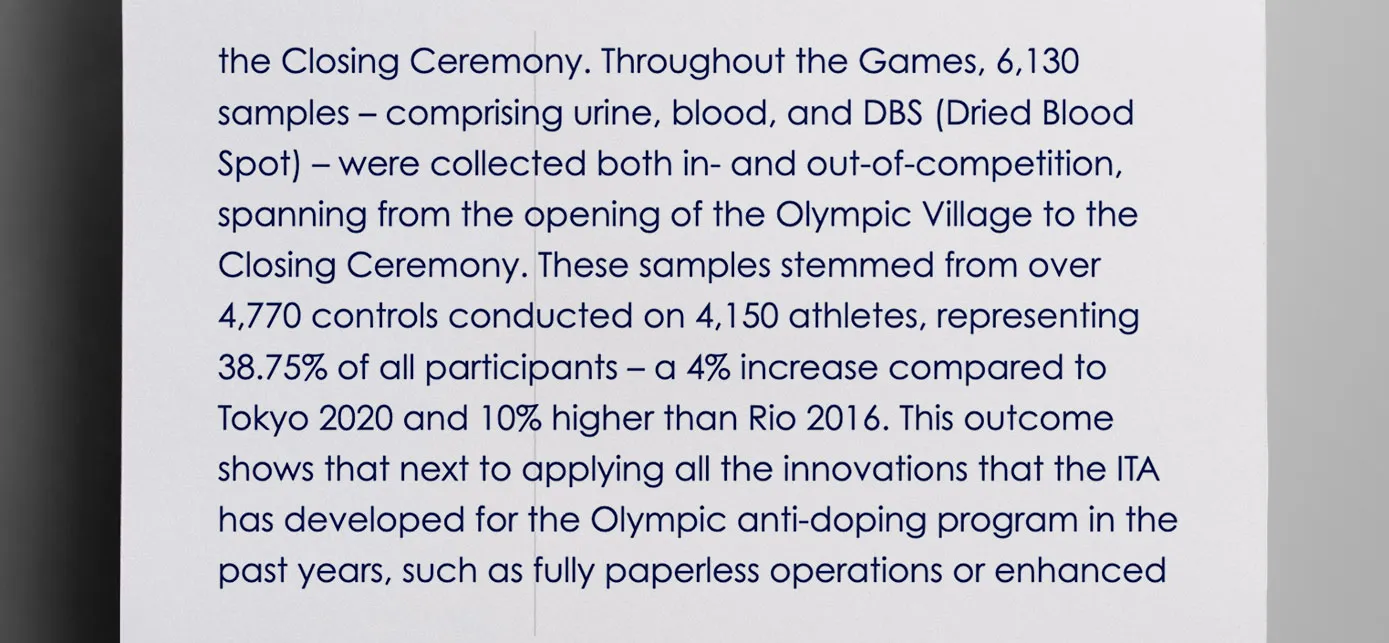Five Olympic Athletes Tested Positive for Doping…So Why Do We Test Less Than Half of all Olympians?

However, almost as long as there have been sports competitions, athletes have used performance-enhancing substances.
Highest Ever Proportion of Olympians Tested
In recent decades, sports organizations have increased their focus on lowering performance doping as much as possible. This year, the International Testing Agency (ITA), one of the world’s anti-doping governing bodies, announced in a public statement that they tested more Olympians this year than in any previous Games.

“Throughout the Games, 6,130 samples – comprising urine, blood, and DBS (Dried Blood Spot) – were collected both in and out-of-competition, spanning from the opening of the Olympic Village to the Closing Ceremony. These samples stemmed from over 4,770 controls conducted on 4,150 athletes, representing 38.75% of all participants – a 4% increase compared to Tokyo 2020 and 10% higher than Rio 2016,” said the ITA on Sept. 19.
The ITA also revealed that five of these tests came back positive.

Wait… What?
You read that correctly. Less than 40% of all Olympic athletes were tested and that is the highest proportion ever.
Why not test them all? Wouldn’t it be a fairer and more effective process to eliminate doping at the Olympics?
Too Expensive and a Logistical Nightmare
The main reason why not all athletes are tested for doping is a limitation of available resources. Not only does it take more money to perform tests on every athlete before and during the competition, but it would also cause logistical nightmares, especially during the early stages of the tournament when there are more competitions and, thus, more moving pieces.
That’s why the World Anti-Doping Agency (WADA), ITA, National Anti-Doping Organizations (NADO), and other anti-doping governing bodies use different strategies whose primary goal is to focus on the athletes more likely to be doping.
‘Intelligence-Led Approach’
As the International Tennis Integrity Agency (ITIA) explains in its rules regarding doping and tests, they employ a so-called “risk-based and intelligence-led approach to testing.”
“We test to deter those vulnerable to a doping decision and to find those who chose to cheat by using banned substances. Testing can take place in-competition at events, or out-of-competition, in training venues, or even at an athlete’s home,” the ITIA’s rule book states.
This means that the focus is not on those who don’t have good results but on those who win, forcing athletes to think twice about cheating via doping.
“It is not surprising that athletes who are subjected to regular random doping testing experience the risk of being caught so high that they refrain from using prohibited substances,” states an article co-authored by Anders Solheim, the head of the Anti-Doping Agency in Norway, and Fredrik Lauritzen, an exercise physiologist with a PhD in neuroscience and a science director in Anti-doping Norway.
Simply put, testing athletes stops most of them from taking steroids. That implies that, despite the logistical hardships, we should do more of it.
Can Doping Tests Reach 50% at the Next Olympics?
There is no doubt that the number of tests will increase during the 2028 Olympics in Los Angeles, especially since the Jannik Sinner controversy and the case of 23 swimmers from China, but it is hard to imagine that all the athletes who participate in this tournament will be tested.
Given the prohibitive effect doping tests has on steroid-use by athletes, however, the ITA should continue to increase the proportion of doping tests at each Olympics, until the maximum of 100% of athletes tested is achieved. When athletes know they have a less than 50% chance of being tested, they are more likely to circumvent the rules. If athletes know they will definitely be tested, doping use at and prior to the Olympics could fall to zero.
Discover More Muck
First AI-Powered Lawsuit Exposes California’s Eco-Fraud Empire
Feature John Lynn | Apr 10, 2025

Former Child Soldier General Lied to Get Green Card
Report Strahinja Nikolić | Feb 27, 2025

Weekly Muck
Join the mission and subscribe to our newsletter. In exchange, we promise to fight for justice.
Weekly
Muck
Join the mission and subscribe to our newsletter. In exchange, we promise to fight for justice.





